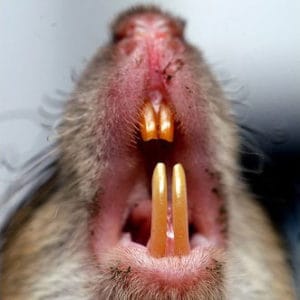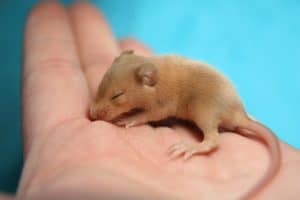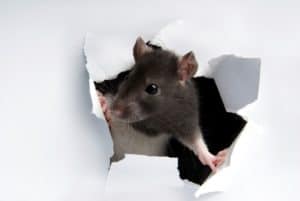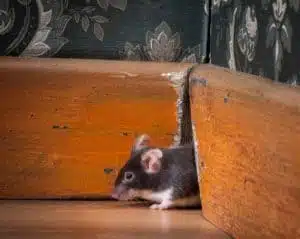What Do Mice Like to Eat & Other Habits
By: EarthKind
Nearly 1/3 of American homes have reported a house mouse problem at one time or another, and it’s not hard to believe considering how much we have in common with these furry little pests. Whether you are a chocolate lover or a fitness fanatic, the similarities between human and mouse interests could be just what’s inviting them into your home.
Most mouse infestations occur during the fall and winter months when they are seeking warmth inside people’s homes. Learning more about these critters can help you better understand how to keep them out of your space. We’ll cover some of the main staples of their diet along with other things they like so you can use this information to effectively combat these common pests.
What Do Mice Eat?
In general, mice are omnivores and don’t necessarily have a favorite food per se. This means that they enjoy eating both vegetation and meat. The stereotype is that they’re attracted to cheese, but that actually isn’t true because their extremely sensitive noses find it a bit too smelly. A mouse’s diet inside of a home compared to what they consume in the wild will differ depending on what’s available. Naturally, mice like to eat human food if they can find it, including:
- Seeds and grains
- Cereals
- Chocolate
- Pet food
- Fruits
- Meats
If these creatures come across any type of food in your home that smells good to them, they will likely give it a try.
On the other hand, wild mice will primarily feast on dead plant, animal matter, and scraps, including:
- Rotting fruit
- Veggies
- Dead animals
- Most any item found in a garbage can is fair game
This is a big reason why mice that live outdoors appear in urban neighborhoods — there are plenty of trash cans filled with yummy food scraps for them to enjoy. This makes urban environments the perfect habitat for hungry mice.
Farms also need to be mindful of keeping these critters at bay because rodents love eating fruits, oats, and grains. Your harvest can be drastically reduced if a lot of them infiltrate your property, so preventing infestations is especially important in agricultural settings.
Some mice have even been known to resort to cannibalistic behavior under extreme conditions. For example, it is not unheard of for a mother to eat one of her babies if no food can be found. Sometimes, they will even chew on their tails out of desperation. This behavior is fairly uncommon though, and they will only resort to it under duress.
Diet of a Newborn
A newborn mouse will not be able to gather food for itself. Babies typically get milk from their mothers, and then their moms must go hunt for food on their own and bring it back to the nest.
Before giving birth, the mother will look for a nesting spot that is near a reliable food source so her babies can remain close by while she scavenges. While in the womb, a baby will even adapt, or localize its tastes based on what the mother eats. This is why a family of mice may decide to turn your home into their home: There’s plenty of good food to go around for the babies.
What Else Do These Pests Like to Do?
Beyond eating, there are other habits these pests have that are good to know about. It can help homeowners learn where to locate them and better understand how to get rid of mice.
Chewing & Gnawing
Similar to eating, these pests are also known to chew and gnaw on many household objects that are not food. Rodent teeth never stop growing, so they need to chew all the time to file down their incisors.
Bite marks on furniture, walls, cardboard boxes, and sometimes even electrical wiring are often the first signs of mice that people notice. They also chew up various things to make soft bedding for their nests. Just like with food, they use whatever nesting materials they can find.
Gettin’ Busy
A female mouse can have her first litter at just 6-8 weeks old and reproduce about every two months after that. Needless to say, there is no such thing as ‘just one mouse’ and you can go from one sighting to an infestation in the blink of an eye.
Sneaking Around
Nighttime is the right time for these creatures. Since visual acuity is not a strong suit for them, evening hours and dim lighting are not a setback. And since you’re sound asleep, they can have the run of the house.
Athletic Training
You might not believe it, but rodents can jump more than three times their height; they are capable swimmers and even better climbers. All of that means that the best way to keep them out is to make sure they don’t want to come in in the first place.
Staying Close to Home
Even though mice can be found all over the world, they prefer to spend most of their time less than 20 feet away from their nest or burrow. This means that when you see signs of them, they didn’t just ‘eat and run;’ their home is likely nearby.
Pets
Rodents don’t mind eating Fido or Fluffy’s sloppy seconds. If you leave a dish of pet food out 24/7, rats and mice will come and grab the nutritious morsels up to 20X daily, then ‘cache’ (stockpile) for later consumption! Be sure to keep the food dishes empty until meal time so you know you’re only feeding your fur-family members and no one else.
Keeping Them Away
Despite our common interests, these pests are not people. Rodents can carry many diseases like salmonella and Hantavirus, and are a health risk for people – their hair can even aggravate asthma. So what do you do?
For starters, do not leave food out in the open. Leaving a box of treats on the countertop is practically an open invitation for mice. If you have flour or grains in your kitchen, it’s a good idea to keep them in glass jars. They cannot chew through glass, so putting these items in jars or other tough, airtight containers will keep your food safe. This can help with other types of pest control as well.
Avoid leaving dishes in the sink, and wash them promptly after use instead. Dishes with food residue are easy for pests to reach and can lead to disaster in the kitchen. Rinse everything off thoroughly and put the dishes away when you’re done — otherwise, they may end up leaving droppings on dishes left out in the open.
Finally, seal or block potential entry points like dryer vents and use a botanical repellent such as Stay Away® Rodent to make sure mice stay outside where they belong.












